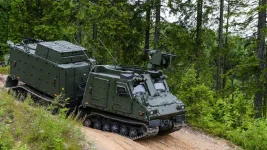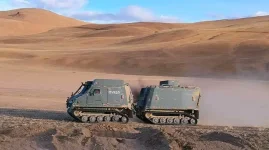- Views: 3K
- Replies: 14
The race to shape the future of the Indian Navy’s maritime power has intensified, with major European defence contractors from the United Kingdom and France presenting rival proposals for India’s third aircraft carrier.
As New Delhi aims to operationalise a three-carrier strike group by 2035, BAE Systems and Naval Group are actively vying to co-develop the 65,000-ton supercarrier, tentatively named INS Vishal.
This strategic contest comes at a critical juncture. The Indian government is currently prioritising final approval from the Cabinet Committee on Security (CCS) for its second indigenous aircraft carrier (IAC-II), a 45,000-ton follow-on to the newly commissioned INS Vikrant.
However, looking beyond this immediate requirement, the Navy is already laying the groundwork for a larger, more capable "game-changer" vessel equipped with advanced launch systems.
A Roadmap for Blue-Water Dominance
The stakes were raised significantly following the release of the Ministry of Defence’s Technology Perspective and Capability Roadmap (TPCR) 2025 on September 5.The document explicitly outlines a requirement for future carriers to possess nuclear propulsion and modern launch technologies, signaling a definitive shift away from older designs.
India’s carrier programme is evolving in distinct phases. Having moved from the Russian-origin INS Vikramaditya to the indigenously built IAC-I (INS Vikrant), the immediate focus is on IAC-II.
Currently under development at Cochin Shipyard Limited (CSL), this ₹40,000 crore project is expected to mirror Vikrant’s Short Take-Off But Arrested Recovery (STOBAR) ski-jump configuration.
While largely similar in design to speed up production, IAC-II will feature significant enhancements in stealth, sensor fusion, and operational efficiency based on lessons learned from its predecessor.
With CCS clearance for IAC-II expected by the first quarter of 2026, the Navy is simultaneously fast-tracking the conceptual phase for IAC-III (INS Vishal). This proposed leviathan is envisioned to displace between 65,000 and 70,000 tons, placing it in the same league as the UK’s Queen Elizabeth-class and France’s future carrier programme.
The Shift to CATOBAR
Unlike India’s current fleet, INS Vishal represents a technological leap. The vessel is designed to abandon the ski-jump ramp in favour of a Catapult Assisted Take-Off But Arrested Recovery (CATOBAR) system.This transition is crucial for launching heavier, fully loaded combat jets—such as the recently ordered Rafale-M—as well as future unmanned aerial vehicles (UAVs) and airborne early warning aircraft.
A key component of this upgrade is the integration of an Electromagnetic Aircraft Launch System (EMALS). This technology replaces traditional steam catapults, allowing for smoother acceleration and reduced stress on airframes.
The roadmap highlights that these capabilities are essential for overcoming the payload limitations currently imposed by STOBAR operations in high-threat environments.
The French Proposition
France’s Naval Group, a long-standing partner in India’s submarine programmes, is leveraging its expertise with nuclear propulsion to court the Indian Navy. Their proposal reportedly involves adapting the design of France's next-generation carrier, the Porte-Avions Nouvelle Génération (PANG).Paris has pitched a collaborative model that could see the 75,000-ton PANG design modified for Indian requirements, potentially including joint research and development at Indian shipyards.
This offer is bolstered by the Indian Navy’s April 2025 decision to acquire 26 Rafale-M fighters for $8 billion, creating a logistical synergy between the carrier’s design and its primary air wing.
France’s experience with the nuclear-powered Charles de Gaulle and its EMALS integration is a central pillar of their bid.
The British Offer
On the other side of the channel, the United Kingdom is capitalising on the momentum from recent joint naval operations.In October 2025, the Royal Navy’s HMS Prince of Wales sailed alongside INS Vikrant during high-profile exercises, marking the first time British and Indian carrier strike groups have operated in tandem.
Building on this strategic alignment, BAE Systems has offered to co-develop specific variants of the Electromagnetic Aircraft Launch System (EMALS) and share design insights from the Queen Elizabeth-class carriers.
London frames this partnership as a key element of the wider "QUAD-plus" security architecture.
The British proposal also highlights potential industrial offsets, including cooperation on the Tempest future fighter programme and ensuring interoperability with F-35B jets for cross-deck operations.
A Potential Hybrid Solution?
Both European contenders are emphasising "plug-and-play" technology transfers to circumvent potential delays associated with procuring sensitive systems solely from the United States—a hurdle that has previously slowed INS Vishal’s conceptual progress.Interestingly, defence sources suggest that a collaborative approach involving both nations is not impossible. A "hybrid consortium" has been floated as a potential avenue, combining French expertise in nuclear propulsion with British mastery of modular construction and conventional carrier operations.
Such a partnership could offer India a unique, best-of-both-worlds solution for its most ambitious naval project to date.


